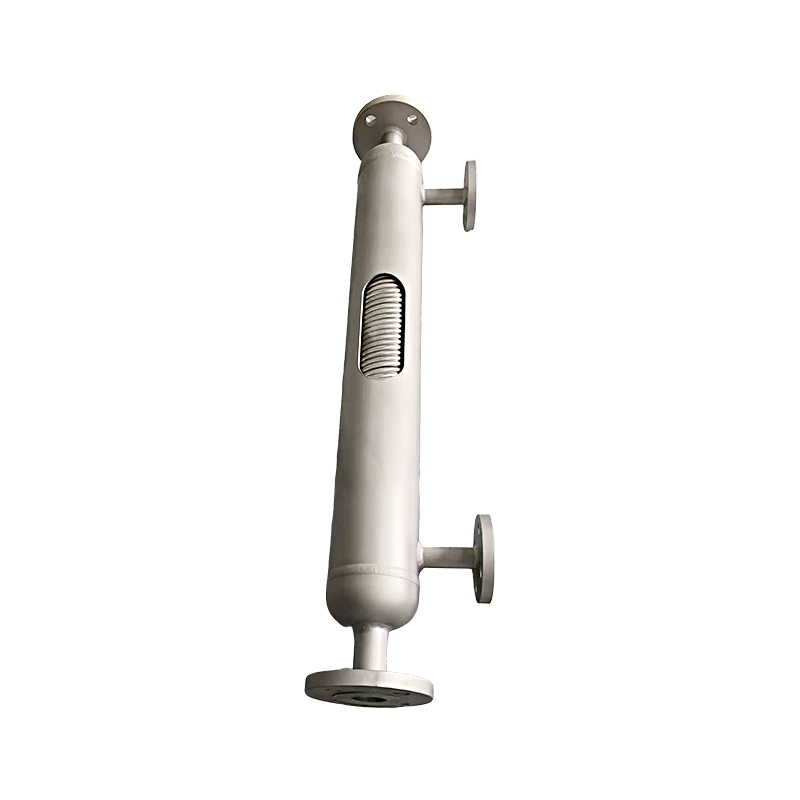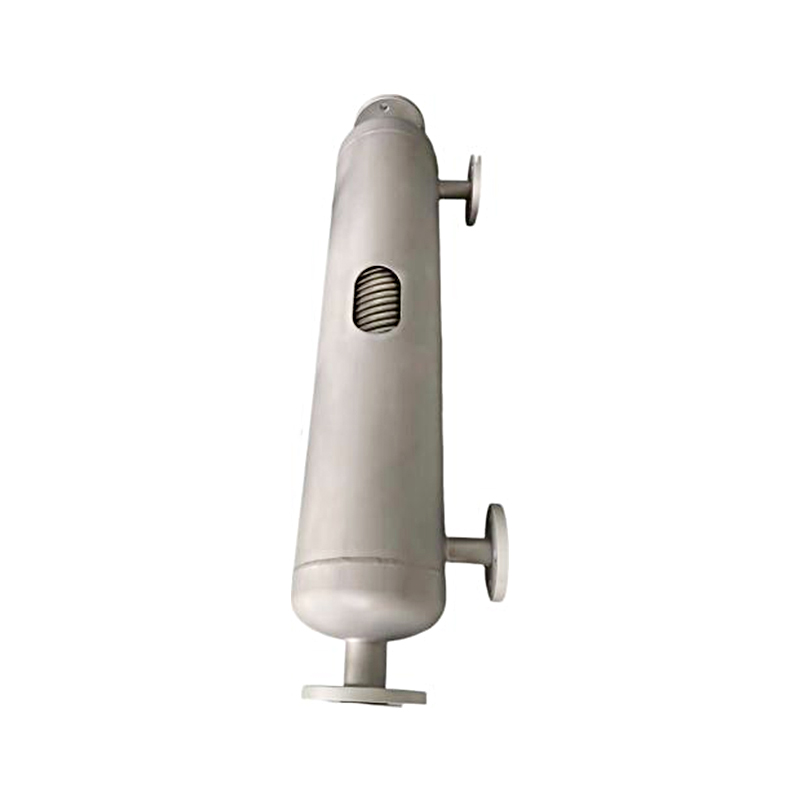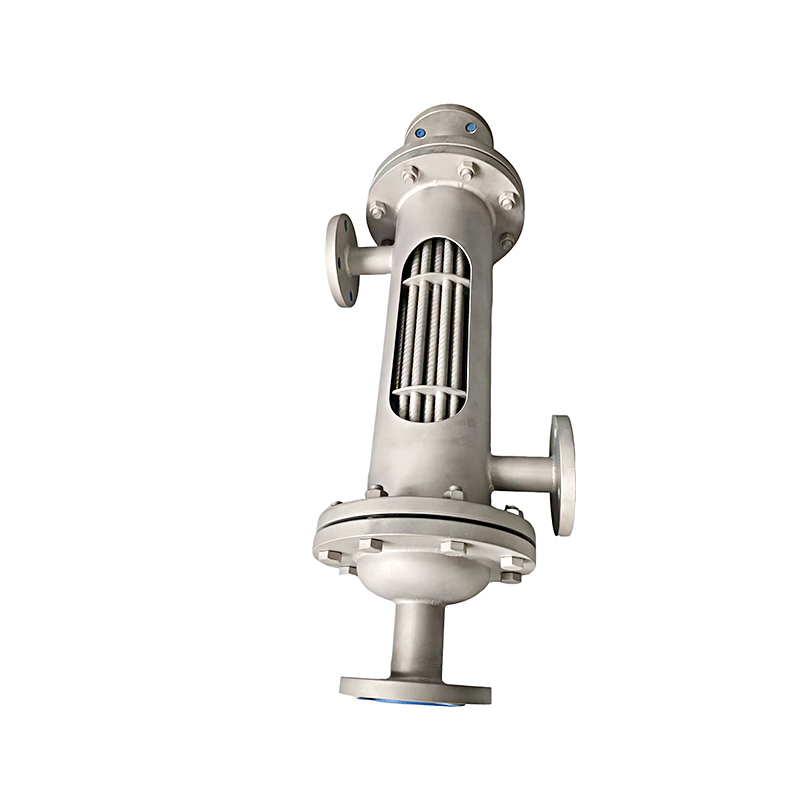How does the corrosion-resistant silicon carbide heat exchanger resist strong acid and alkali environments?
Release Time : 2025-06-04
The corrosion-resistant silicon carbide heat exchanger exhibits excellent performance in strong acid and alkali environments, mainly due to its unique material properties and carefully designed structure. This heat exchanger can not only effectively resist chemical erosion, but also maintain high heat exchange efficiency under extreme conditions, making it an ideal choice for chemical, pharmaceutical and other corrosive media processing industries.
First of all, as an advanced ceramic material, silicon carbide has extremely high chemical stability. It hardly reacts with any acid, alkali or salt, and can exist stably for a long time even in environments with extremely high concentrations of strong acids such as sulfuric acid, nitric acid or strong alkalis such as sodium hydroxide. This characteristic enables silicon carbide heat exchangers to work normally in corrosive media that traditional metal materials cannot handle. For example, in some highly corrosive chemical reaction processes, traditional stainless steel or other alloy equipment is easily corroded and fails, but silicon carbide heat exchangers can continue to provide reliable heat exchange services to ensure that the production process is not disturbed.
Secondly, the microstructure of silicon carbide materials also makes an important contribution to its corrosion resistance. The silicon carbide crystal structure is tight and uniform, with almost no pores and defects, forming a dense protective layer that effectively prevents corrosive substances from penetrating into the material. In addition, the silicon carbide surface is smoother and flatter after special treatment, which further enhances its corrosion resistance. This surface treatment not only prevents impurities from depositing and reduces the need for cleaning and maintenance, but also improves heat transfer efficiency and makes heat transfer more uniform and efficient.
Furthermore, the design of the corrosion-resistant silicon carbide heat exchanger fully considers the various challenges in practical applications. In order to better meet the needs of different working conditions, engineers optimized the flow channel layout, sealing methods and connectors during the design stage. For example, the modular design allows the heat exchanger to flexibly adjust the size and shape according to the specific application scenario to meet diverse needs. At the same time, the reasonable flow channel design ensures smooth flow of the medium, reduces local resistance and turbulence, and reduces the risk of wear caused by fluid impact. These design details not only improve the overall performance of the equipment, but also extend its service life.
It is worth noting that the corrosion-resistant silicon carbide heat exchanger's excellence in manufacturing technology is also one of the important factors in its successful resistance to strong acid and alkali environments. Modern manufacturing technologies such as high-temperature sintering and precision machining ensure the quality and consistency of each component. By strictly controlling the sintering temperature and time, a silicon carbide matrix with fine and uniform grains can be obtained, thereby enhancing the mechanical strength and corrosion resistance of the material. In addition, advanced welding and sealing technologies are also used in the production of connectors to ensure that the entire system still maintains good sealing performance under high pressure and corrosive media to avoid leakage accidents.
In addition, the corrosion-resistant silicon carbide heat exchanger also has excellent thermal conductivity. Despite its relatively low density, silicon carbide has a very high thermal conductivity, which means that it can quickly transfer heat from one side to the other, achieving efficient energy conversion. This feature is particularly important in the process of handling corrosive media, as it allows the heat exchanger to maintain high efficiency while reducing the risk of damage caused by overheating. In addition, excellent thermal conductivity also helps to reduce energy consumption, improve energy efficiency, and save operating costs for enterprises.
In addition to the technical features mentioned above, the environmental performance of corrosion-resistant silicon carbide heat exchangers cannot be ignored. Since the material itself is non-toxic and harmless and does not release harmful substances, it has minimal impact on the environment during use. This is especially important for companies that need to strictly comply with environmental regulations, which not only helps to enhance the company's social responsibility image, but also meets increasingly stringent environmental protection requirements. At the same time, the long life and low maintenance requirements of silicon carbide heat exchangers also mean that waste is reduced, resources are effectively utilized, and the concept of sustainable development is in line with the concept of sustainable development.
Finally, the application range of corrosion-resistant silicon carbide heat exchangers is wide, covering many fields such as petrochemicals, pharmaceuticals, and metallurgy. Whether in high-temperature and high-pressure chemical reactors or in laboratory equipment that requires precise temperature control, silicon carbide heat exchangers can provide stable and reliable solutions with their excellent performance. It is not only a key component to ensure the safety of production processes, but also an important force to promote the development of various industries in a more efficient and greener direction.
In summary, the corrosion-resistant silicon carbide heat exchanger successfully resists the challenges brought by strong acid and alkali environments through its unique material properties, sophisticated manufacturing process and scientific and reasonable design. It not only provides users with a long-lasting and reliable heat exchange solution, but also shows great potential in energy saving and environmental protection. In the future, with the continuous advancement of technology and changes in market demand, it is believed that silicon carbide heat exchangers will show unlimited possibilities in more fields and continue to lead the development trend of the industry.
First of all, as an advanced ceramic material, silicon carbide has extremely high chemical stability. It hardly reacts with any acid, alkali or salt, and can exist stably for a long time even in environments with extremely high concentrations of strong acids such as sulfuric acid, nitric acid or strong alkalis such as sodium hydroxide. This characteristic enables silicon carbide heat exchangers to work normally in corrosive media that traditional metal materials cannot handle. For example, in some highly corrosive chemical reaction processes, traditional stainless steel or other alloy equipment is easily corroded and fails, but silicon carbide heat exchangers can continue to provide reliable heat exchange services to ensure that the production process is not disturbed.
Secondly, the microstructure of silicon carbide materials also makes an important contribution to its corrosion resistance. The silicon carbide crystal structure is tight and uniform, with almost no pores and defects, forming a dense protective layer that effectively prevents corrosive substances from penetrating into the material. In addition, the silicon carbide surface is smoother and flatter after special treatment, which further enhances its corrosion resistance. This surface treatment not only prevents impurities from depositing and reduces the need for cleaning and maintenance, but also improves heat transfer efficiency and makes heat transfer more uniform and efficient.
Furthermore, the design of the corrosion-resistant silicon carbide heat exchanger fully considers the various challenges in practical applications. In order to better meet the needs of different working conditions, engineers optimized the flow channel layout, sealing methods and connectors during the design stage. For example, the modular design allows the heat exchanger to flexibly adjust the size and shape according to the specific application scenario to meet diverse needs. At the same time, the reasonable flow channel design ensures smooth flow of the medium, reduces local resistance and turbulence, and reduces the risk of wear caused by fluid impact. These design details not only improve the overall performance of the equipment, but also extend its service life.
It is worth noting that the corrosion-resistant silicon carbide heat exchanger's excellence in manufacturing technology is also one of the important factors in its successful resistance to strong acid and alkali environments. Modern manufacturing technologies such as high-temperature sintering and precision machining ensure the quality and consistency of each component. By strictly controlling the sintering temperature and time, a silicon carbide matrix with fine and uniform grains can be obtained, thereby enhancing the mechanical strength and corrosion resistance of the material. In addition, advanced welding and sealing technologies are also used in the production of connectors to ensure that the entire system still maintains good sealing performance under high pressure and corrosive media to avoid leakage accidents.
In addition, the corrosion-resistant silicon carbide heat exchanger also has excellent thermal conductivity. Despite its relatively low density, silicon carbide has a very high thermal conductivity, which means that it can quickly transfer heat from one side to the other, achieving efficient energy conversion. This feature is particularly important in the process of handling corrosive media, as it allows the heat exchanger to maintain high efficiency while reducing the risk of damage caused by overheating. In addition, excellent thermal conductivity also helps to reduce energy consumption, improve energy efficiency, and save operating costs for enterprises.
In addition to the technical features mentioned above, the environmental performance of corrosion-resistant silicon carbide heat exchangers cannot be ignored. Since the material itself is non-toxic and harmless and does not release harmful substances, it has minimal impact on the environment during use. This is especially important for companies that need to strictly comply with environmental regulations, which not only helps to enhance the company's social responsibility image, but also meets increasingly stringent environmental protection requirements. At the same time, the long life and low maintenance requirements of silicon carbide heat exchangers also mean that waste is reduced, resources are effectively utilized, and the concept of sustainable development is in line with the concept of sustainable development.
Finally, the application range of corrosion-resistant silicon carbide heat exchangers is wide, covering many fields such as petrochemicals, pharmaceuticals, and metallurgy. Whether in high-temperature and high-pressure chemical reactors or in laboratory equipment that requires precise temperature control, silicon carbide heat exchangers can provide stable and reliable solutions with their excellent performance. It is not only a key component to ensure the safety of production processes, but also an important force to promote the development of various industries in a more efficient and greener direction.
In summary, the corrosion-resistant silicon carbide heat exchanger successfully resists the challenges brought by strong acid and alkali environments through its unique material properties, sophisticated manufacturing process and scientific and reasonable design. It not only provides users with a long-lasting and reliable heat exchange solution, but also shows great potential in energy saving and environmental protection. In the future, with the continuous advancement of technology and changes in market demand, it is believed that silicon carbide heat exchangers will show unlimited possibilities in more fields and continue to lead the development trend of the industry.








